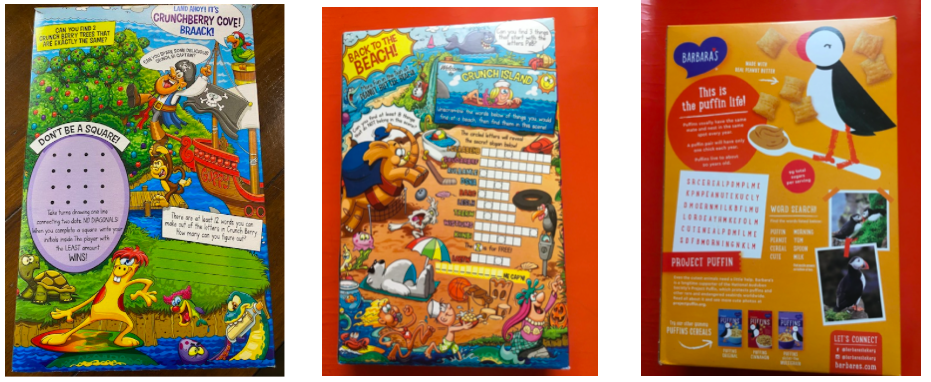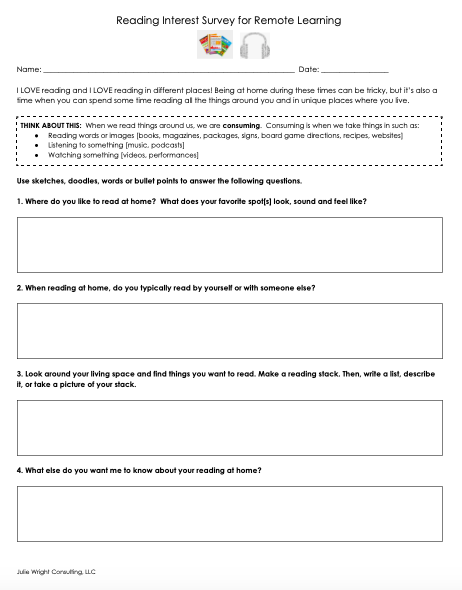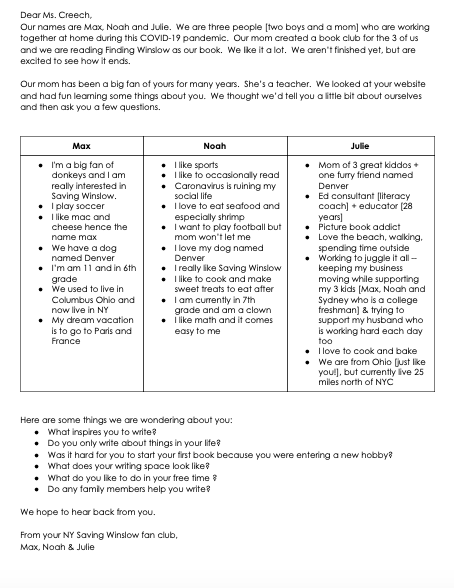Written by Julie Wright & Barry Hoonan
HOW WE GOT INTO PROFESSIONAL CAHOOTS WITH ONE ANOTHER
We’ve had the pleasure of knowing and working with one another for the past seven years. We met at a school in Harlem, Julie as an Instructional Coach and Barry as a Model Classroom Teacher and Instructional Coach. Our work continued well past that experience. With Barry out west and Julie on the east coast, we’ve spent the majority of our years working across 3000 miles. Highlights include Sunday morning co-planning sessions and co-authoring What Are You Grouping For?, Grades 3-8: How to Guide Small Groups Based on Readers -- Not the Book. We’ve always enjoyed being THINKING PARTNERS and we believe educators need someone to think beside now, more than ever.
A DISCLAIMER OF SORTS
As we navigate and co-plan learning during the weeks ahead, here are a few shared agreements:
We are not going to edit these videos which means it might be clunky at times. You might get a barking dog, tech glitches, or family interruptions. We know you’ll be able to relate and hope you’ll be understanding.
The ideas we share are NOT “the way” or “the right way” -- they are just one way to approach things. And, we are figuring it out as we go along too. We hope you’ll take the big ideas we are discussing and — adopt, adapt or improve upon them — making them fit your settings, interests and needs.
We suggest focusing on process -- our work will continue to unfold between video segments. That’s why if you pop back into our shared document links, you’ll notice changes because we’ll be adding ideas. That’s because responsive plans evolve across the days and weeks.
HERE’S WHAT WE ARE UP TO
Kids have been learning from home for several weeks now. Barry and Julie have a co-planning routine and they “meet” about 2 times each week.
Barry’s students have settled into a learning from home routine, sort of. Each week brings about new celebrations and new challenges.
We are co-planning a mini-writing unit focused on Greek mythology. Kiddos spent the last 2 weeks reading Greek myths. This writing mini-unit isn’t about research, it’s about narrative writing with a twist of Greek mythology.
THINGS WE ARE THINKING ABOUT NOW
How does workshop play out in terms of synchronous and asynchronous learning?
How can mentor texts that we choose and that students choose be used to support learning?
When, where, why, and how will students meet in small breakout groups over the next week?
How can student work be used for a minilesson using a digital platform?
VIDEO
If you are interested in watching a coach and teacher co-plan — working as THINKING PARTNERS in response to the unique times we are currently experiencing — check out this video.
OTHER LINKS & RESOURCES
Our DRAFTY, dynamic, in-motion, evolving plans: Writing Mini-Unit [Greek Mythology]
Planning Templates: Co-planning Templates
Small Group Plans: Small Group Reading & Writing Lesson Plans to Adopt, Adapt or Improve [During Remote/Distance Learning]
BARRY’S REFLECTIONS
I am thinking about how to co-construct 'what counts .... what are we going after' in this integrated writing project. Should we have a discussion? Should we jot down a couple of ideas first?
I am considering whether I should read through all student writing this weekend or pair them up and ask each small group to find two pluses in their writing partner's work.
JULIE’S REFLECTIONS
Who is on the worry / wondering list? What’s our response?
Will small groups continue to be grade based [5th and 6th] or will we mix it up?
Thinking ahead — what’s next after this mini-writing unit?
WANT TO SUBMIT A QUESTION or CONNECT WITH US?
If something we’ve shared inspires new ideas or ignites some questions, reach out to us using THIS FORM and we’ll do our best to get back to you!










